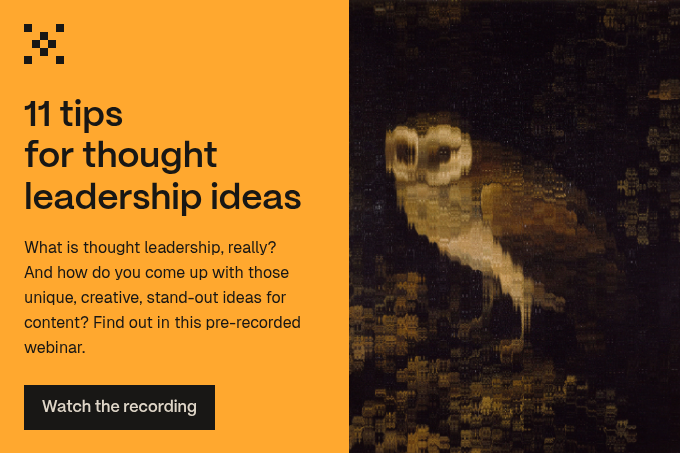This is the first lesson for writers — or anyone — who conducts interviews: If you want someone to talk, you’ve got to know how to listen. And good listening is a surprisingly active process. The interviewee is your focus of attention; you are there to hear what he says and thinks, exclusively.
This is American author Lee Gutkind in his New York Times article about the importance of listening during an interview. Although he talks from the perspective of a creative non-fiction writer, the message is true for any sort of writing.
Interviewing and listening are the best and most effective ways to create more engaging content. An interview paired with effective listening can create a great story and can help you to see the issue at hand from a fresh perspective. And, as we’ve seen, a good interview is the keystone of a great case study.
Ultimately, these skills get you writing for your audience rather than for yourself – something every copywriter must do, but at which many fail.
How to start listening
- Keep quiet. Surprisingly enough, the key to listening is not talking. You should be providing prompts and subtly leading the interview to allow your interviewee to talk rather than filling the time with your own opinions.
- Don’t fear the awkward pause. Don’t feel the urge to fill every pause with another question. Allow pauses where you think the interviewee is thinking or looking for the right words to explain something.
- Be attentive. Try to feel out what most interests the interviewee and let them open up about it and press them about it (as long as it’s relevant!)
- Focus on what you need. Taking a near-verbatim transcript might be necessary for record keeping, but it’s worth listening for the relevant details, figures and good quotes.
- Read between the lines. For those less forthcoming interviewees you might need to draw inferences from things they imply rather than explicitly state. As long as you’re not too liberal with your artistic license, you can use your common sense to work out what they were trying to say and say it for them to see if they agree.
- Keep it casual-ish. The word ‘interview’ conjures nightmarish visions of dire job interviews and Paxman-esque interrogations so it can put some people on the defensive. It's useful to have the interviewee chat about what they do or something a bit unrelated so they can relax and ease into the interview.
- Improvise. This doesn’t mean winging it. You need to have done your research and have a solid idea of what you need from the interview, but don’t rigidly stick to a set of prepared questions. You should have a rough outline for the interview that you can riff on depending on the priorities of the interviewee.
Whilst it's something that we think comes naturally, effective listening is a skill that we have to practise like any other. But, if you master listening, you'll be rewarded with better interviews and be able to create more relevant, engaging content.



.jpg?width=400&height=250&name=art-institute-of-chicago-wasoFWW8G1c-unsplash%20(1).jpg)


